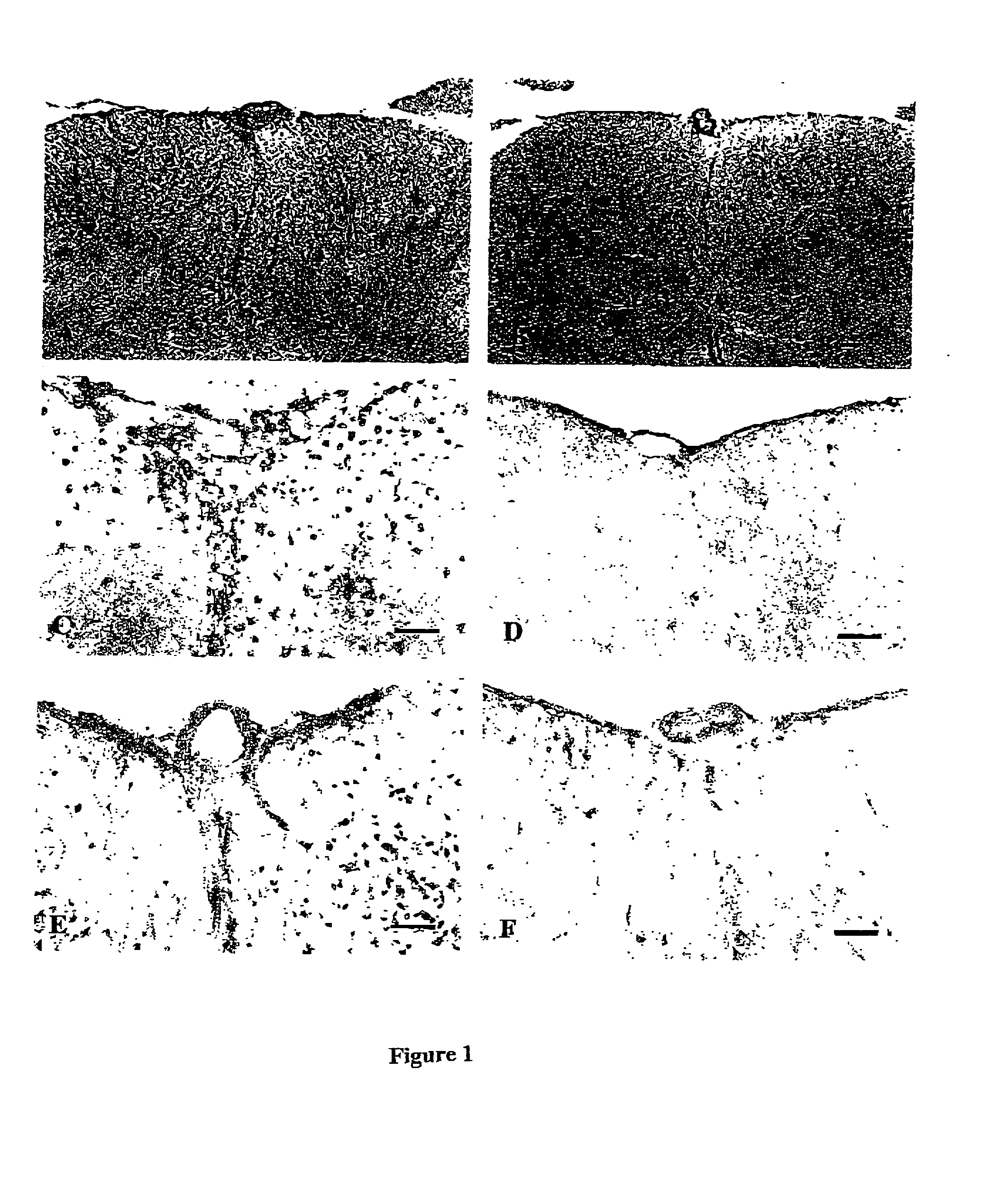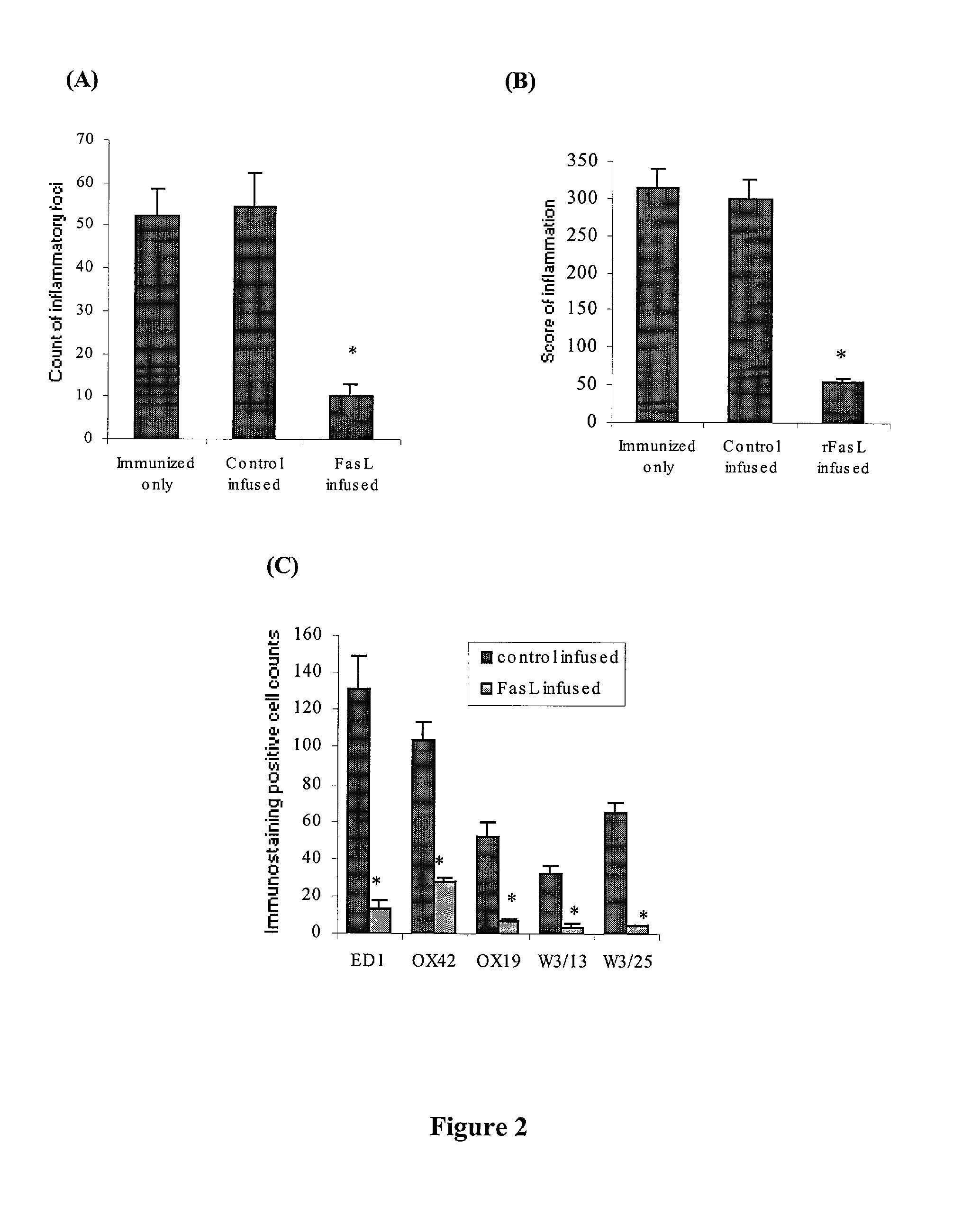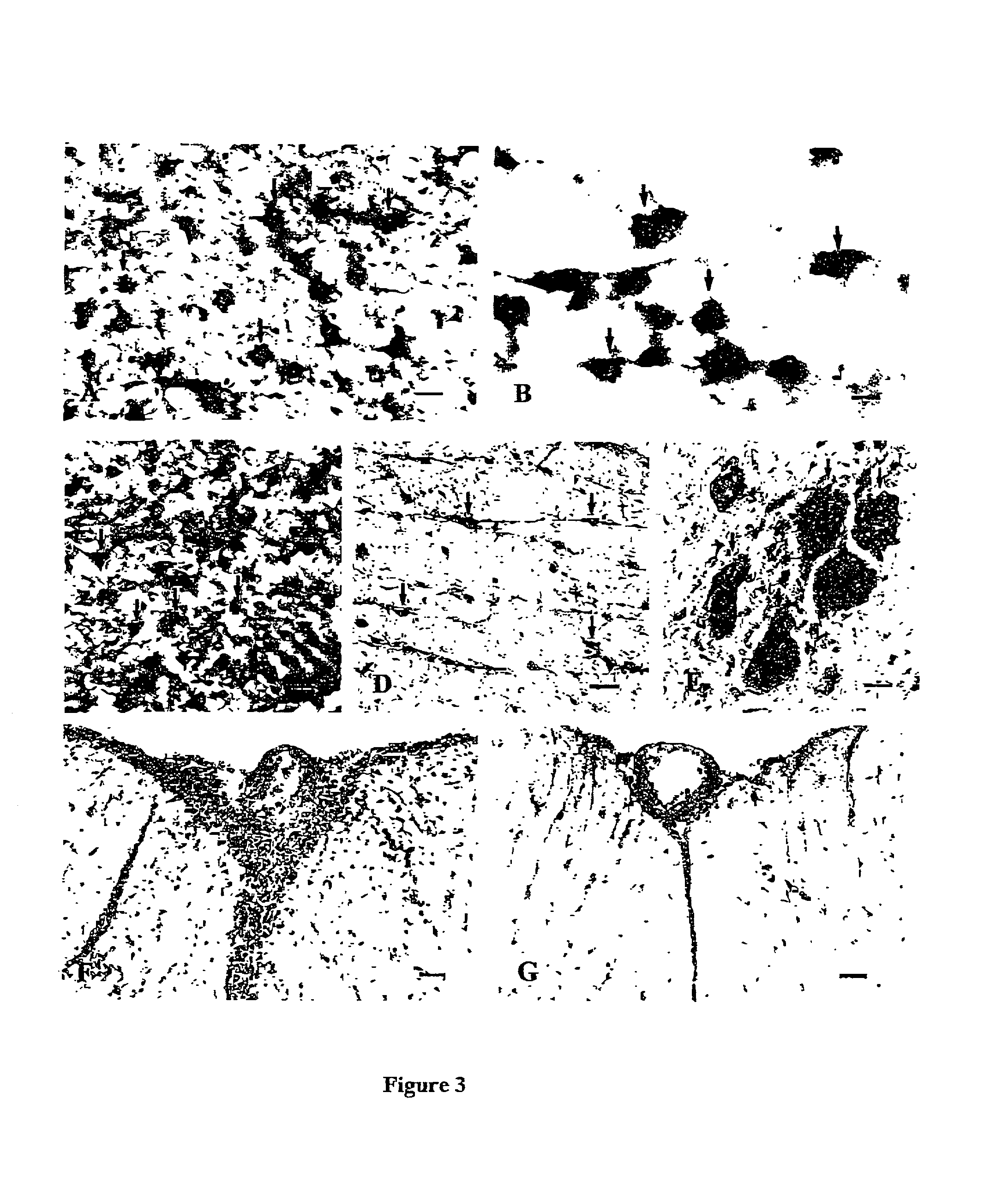Method for inhibiting inflammation in immune privileged sites using Fas ligand fragments
a technology of ligand fragments and immune privileged sites, which is applied in the direction of snake antigen ingredients, peptide/protein ingredients, antibody medical ingredients, etc., can solve the problem of high toxicity of fasl, and achieve the effect of preventing the development of acute ea
- Summary
- Abstract
- Description
- Claims
- Application Information
AI Technical Summary
Benefits of technology
Problems solved by technology
Method used
Image
Examples
examples
[0128] Methods and Methods
[0129] EAE Induction And Observation
[0130] Male Lewis rats with a body weight between 175 g and 200 g were obtained from Charles River Animal Laboratory, Canada. The protocols for animal experiments were approved by the Animal Care Center, University of British Columbia. For the actively induced EAE in Lewis rats, each rat was immunized subcutaneously on both sides of the abdominal flank close to the inguinal lymph nodes with a total of 100 .mu.l myelin basic protein (MBP) / complete Freud's adjuvant (CFA) emulsion, which contained 50 .mu.g guinea pig MBP (Sigma) and 500 .mu.g heat-inactivated mycobacteria tuberculosis (Difco). For the passively transferred EAE, 1-2.times.10.sup.6 MBP-specific T line cells were injected intravenously into each Lewis rat under anesthesia. The rats were weighed and scored for EAE severity daily over 20 days post immunization (dpi) or 15 days after adoptive transfer. The degree of EAE severity was scored as follows: 0: no clinic...
example i
Clinical Signs of EAE
[0153] A summary of the clinical effects of rFasL treatment in acute EAE is shown in Table 1. Since the pain and stress might interfere with the EAE development in experimental animals (Kuroda Y. et al. (1994) Brain Res Bull. 34:15-17) due to the surgical procedures, the incidence of clinical EAE, the EAE onset, the peak EAE score and the loss of body weight during EAE between control-infused rats and non-infused rats were comparied. These two groups did not differ significantly among any of the above four measures. This indicates that the procedure of intrathecal infusion as well as the ingredients in the control infusion solution did not interfere with the development of acute EAE. In rFasL treatment experiments, fifteen rats were each infused with 350 ng rFasL during 7.about.10 dpi. (MBP-immunized rats typically developed EAE on 10 dpi or 11 dpi.) It was found that clinical EAE was completely prevented in 12 rats (80%). In three other rats that developed EAE ...
example ii
Neuroimmunopathology
[0155] Since inflammation is most severe in the LSSC in this EAE model (Simmons R. D. et al. (1992) Autoimmunity 14:17-21; Matsuda M. et al. (1994) Autoimmunity. 19:15-22), the degree of inflammation in LSSC was compared between four control-infused rats (all with 3.sup.0 EAE) and four rats infused with 350 ng of rFasL (three were EAE-free, and one with 1.sup.0 EAE). The tissues were all obtained on 12 dpi. HE staining (FIG. 1A) shows that control-infused rats at the peak EAE stage developed severe inflammation in the LSSC, most significantly in the meningeal and perivascular areas, but many inflammatory cells also infiltrated into the parenchyma of the spinal cord. In contrast, minimal inflammation was observed in LSSC of rFasL-infused rats (FIG. 1B). In the rat that was infused with 350 ng of rFasL and developed mild EAE, the degree of inflammation in the LSSC was also found to be much milder. Previous studies have suggested that T lymphocytes and macrophages r...
PUM
| Property | Measurement | Unit |
|---|---|---|
| Length | aaaaa | aaaaa |
| Solubility (mass) | aaaaa | aaaaa |
Abstract
Description
Claims
Application Information
 Login to View More
Login to View More - R&D
- Intellectual Property
- Life Sciences
- Materials
- Tech Scout
- Unparalleled Data Quality
- Higher Quality Content
- 60% Fewer Hallucinations
Browse by: Latest US Patents, China's latest patents, Technical Efficacy Thesaurus, Application Domain, Technology Topic, Popular Technical Reports.
© 2025 PatSnap. All rights reserved.Legal|Privacy policy|Modern Slavery Act Transparency Statement|Sitemap|About US| Contact US: help@patsnap.com



